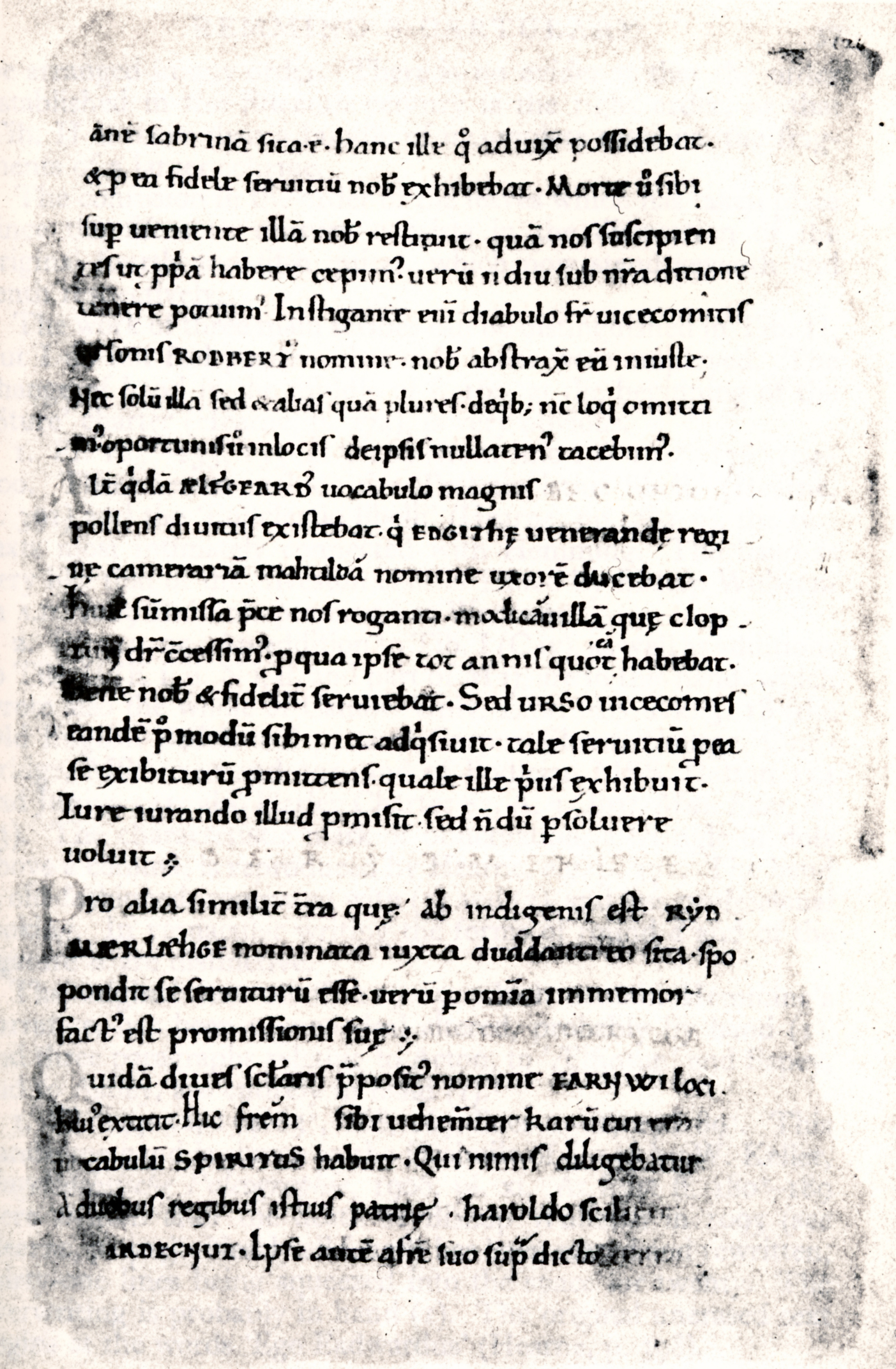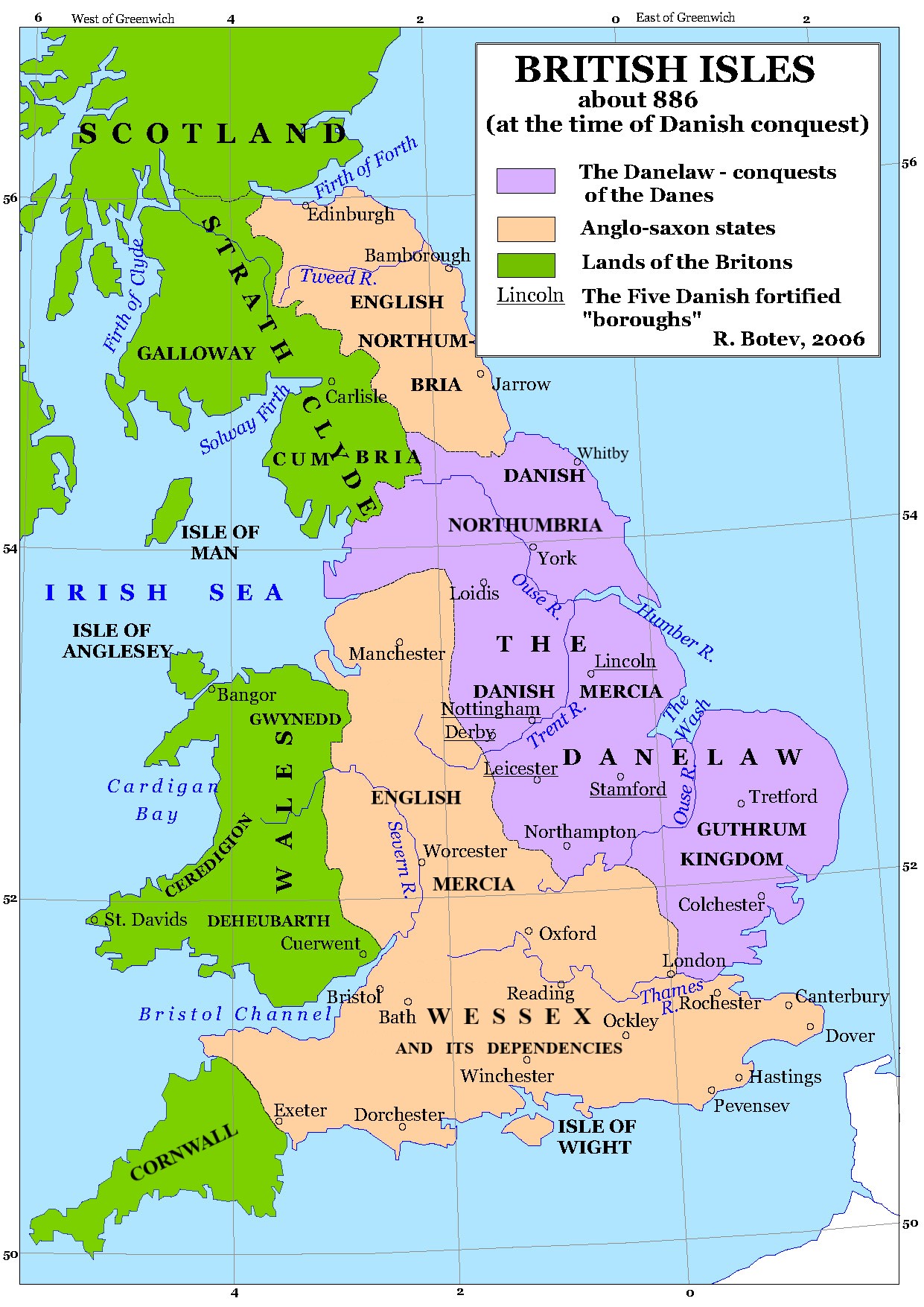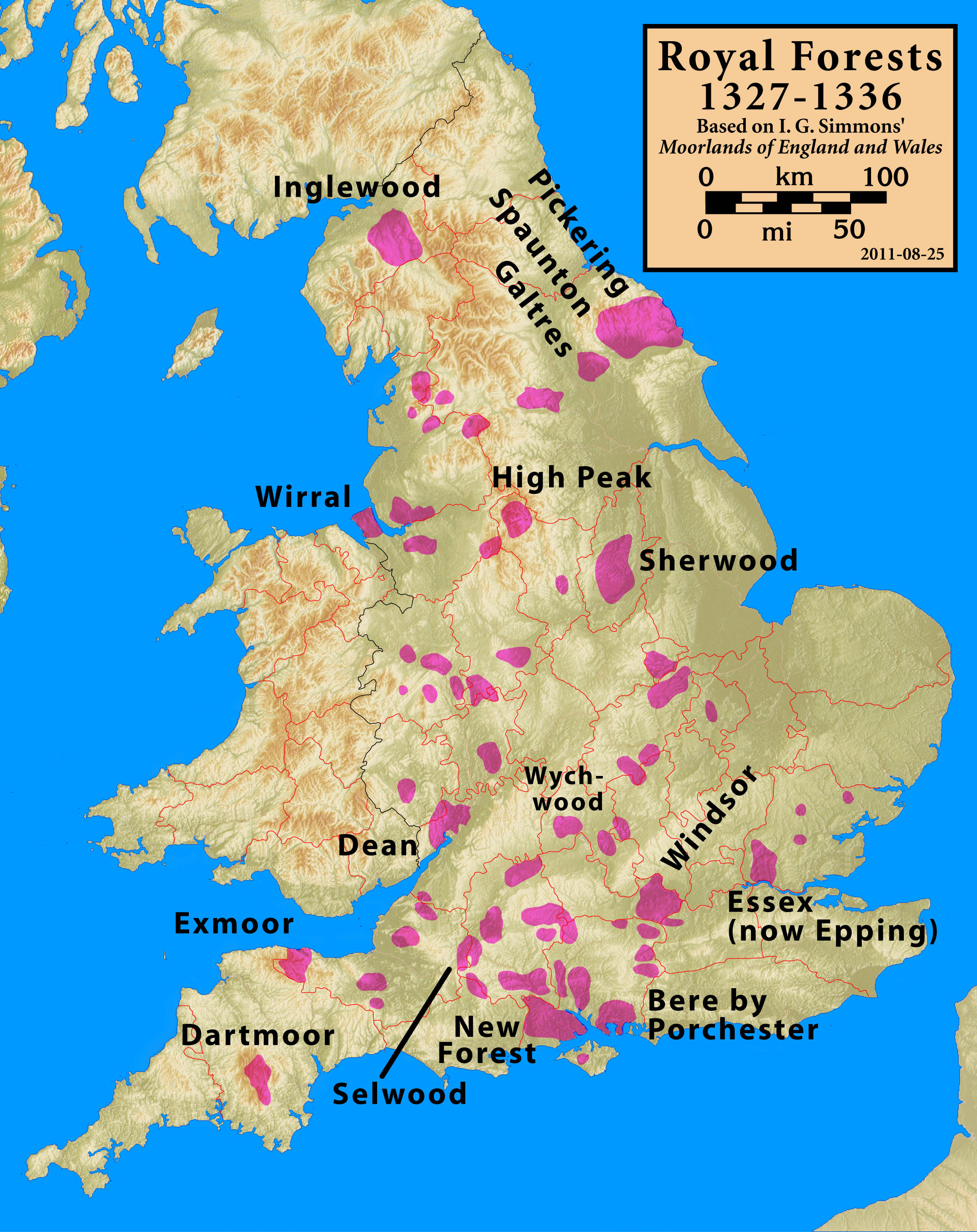|
Ealdorman
Ealdorman ( , ) ''Collins English Dictionary''. was an office in the Government in Anglo-Saxon England, government of Anglo-Saxon England. During the 11th century, it evolved into the title of earl. Early use The Old English word ''ealdorman'' was applied to high-ranking men. It was equated with several Latin titles, including , , , and . The title could be applied to kings of weaker territories who had submitted to a greater power. For example, a Anglo-Saxon charters, charter of King Offa of Mercia described Ealdred of Hwicce as "''Ecgberht, King of Wessex#Subregulus, subregulus''... ''et dux'' ()." In Wessex, the king appointed ealdormen to lead individual shires. Under Alfred the Great (), there were nine or ten ealdormen. Each West Saxon shire had one, and Kent had two (one for East Kent and o ...[...More Info...] [...Related Items...] OR: [Wikipedia] [Google] [Baidu] |
Government In Anglo-Saxon England
Government in Anglo-Saxon England covers English government during the Anglo-Saxon period from the 5th century until the Norman Conquest in 1066. See Government in medieval England for developments after 1066. Until the 9th century, England was divided into multiple Anglo-Saxon kingdoms. Each kingdom had its own laws and customs, but all shared a common basis in the Germanic legal tradition. In the 9th century, the Kingdom of Wessex absorbed the other kingdoms, creating the unified Kingdom of England. The king's primary responsibilities were to defend his people, dispense justice, and maintain order. Kings had extensive powers to make laws, mint coins, levy taxes, raise armies, regulate trade, and conduct diplomacy. The witan or royal council advised the king, and the Royal Households of the United Kingdom, royal household provided the administrative machinery of government. England was divided into ealdormanries led by ealdormen (later earls) appointed by the king. An eald ... [...More Info...] [...Related Items...] OR: [Wikipedia] [Google] [Baidu] |
Earl
Earl () is a rank of the nobility in the United Kingdom. In modern Britain, an earl is a member of the Peerages in the United Kingdom, peerage, ranking below a marquess and above a viscount. A feminine form of ''earl'' never developed; instead, ''countess'' is used. The title originates in the Old English word , meaning "a man of noble birth or rank". The word is cognate with the Old Norse, Scandinavian form ''jarl''. After the Norman Conquest, it became the equivalent of the continental count. In Scotland, it assimilated the concept of mormaer. Since the 1960s, earldoms have typically been created only for members of the British royal family, royal family. The last non-royal earldom, Earl of Stockton, was created in 1984 for Harold Macmillan, prime minister from 1957 to 1963. Alternative names for the rank equivalent to "earl" or "count" in the nobility structure are used in other countries, such as the ''hakushaku'' (дјЇз€µ) of the post-restoration Japanese Imperial era. Et ... [...More Info...] [...Related Items...] OR: [Wikipedia] [Google] [Baidu] |
Г†lfhere, Ealdorman Of Mercia
Г†lfhere (died in 983) was Ealdorman of Mercia. His family, along with those of Г†thelstan Half-King and Г†thelstan Rota, rose to greatness in the middle third of the 10th century. In the reign of Edward the Martyr, Г†lfhere was a leader of the English Benedictine Reform#Later history, anti-monastic reaction and an ally of Edward's stepmother Queen Dowager Г†lfthryth, Queen of England, Г†lfthryth. After the killing of Edward by Г†lfthryth's servants in 978, Г†lfhere supported the new king, Г†lfthryth's son Г†thelred the Unready, and was the leading nobleman in the Kingdom of England until his death in 983. Origins and relations Г†lfhere was a son of Ealhhelm (fl. 940–951) who had been one of the several ealdormen in Mercia in the reigns of Kings Edmund I of England, Edmund and Eadred of England, Eadred. The family was of Wessex origin, like most of those prominent in Mercia in the period, and may have been connected to the royal family, probably members of a collateral branch ... [...More Info...] [...Related Items...] OR: [Wikipedia] [Google] [Baidu] |
Anglo-Saxon Chronicle - Ealdormen (British Library Cotton MS Tiberius A VI, Folio 4r)
The Anglo-Saxons, in some contexts simply called Saxons or the English, were a Cultural identity, cultural group who spoke Old English and inhabited much of what is now England and south-eastern Scotland in the Early Middle Ages. They traced their origins to Germanic peoples, Germanic settlers who became one of the most important cultural groups in Britain by the 5th century. The Anglo-Saxon period in Britain is considered to have started by about 450 and ended in 1066, with the Norman conquest of England, Norman Conquest. Although the details of Anglo-Saxon settlement of Britain, their early settlement and History of Anglo-Saxon England, political development are not clear, by the 8th century an Anglo-Saxon cultural identity which was generally called had developed out of the interaction of these settlers with the existing Romano-British culture. By 1066, most of the people of what is now England spoke Old English, and were considered English. Viking and Norman invasions chang ... [...More Info...] [...Related Items...] OR: [Wikipedia] [Google] [Baidu] |
Ecgberht, King Of Wessex
Ecgberht (died 839), also spelled Egbert, Ecgbert, Ecgbriht, Ecgbeorht, and Ecbert, was King of Wessex from 802 until his death in 839. His father was King Ealhmund of Kent. In the 780s, Ecgberht was forced into exile to Charlemagne's court in the Frankish Empire by the kings Offa of Mercia and Beorhtric of Wessex, but on Beorhtric's death in 802, Ecgberht returned and took the throne. Little is known of the first 20 years of Ecgberht's reign, but it is thought that he was able to maintain the independence of Wessex against the kingdom of Mercia, which at that time dominated the other southern English kingdoms. In 825, Ecgberht defeated Beornwulf of Mercia, ended Mercian Supremacy at the Battle of Ellandun, and proceeded to take control of the Mercian dependencies in southeastern England. In 829, he defeated Wiglaf of Mercia and drove him out of his kingdom, temporarily ruling Mercia directly. Later that year Ecgberht received the submission of the Northumbrian king at Dor ... [...More Info...] [...Related Items...] OR: [Wikipedia] [Google] [Baidu] |
Eadric Streona
Eadric Streona (died 1017) was Ealdorman of Mercia from 1007 until he was killed by King Cnut. Eadric was given the epithet "Streona" (translated as "The Acquisitive”) in '' Hemming's Cartulary'' because he appropriated church land and funds for himself. Eadric became infamous in the Middle Ages because of his traitorous actions during the Danish re-conquest of England. Eadric was one of at least eight children and had relatively humble beginnings: his father Ethelric attended the court of King Æthelred the Unready, but was of no great significance and is not known to have had any titles. Even before becoming an ealdorman, Eadric seems to have acted as Æthelred's enforcer; in 1006 he instigated the killing of the Ealdorman of York, Elfhelm. Eadric was married to Æthelred's daughter Eadgyth by 1009, thus becoming his son-in-law. Eadric was appointed Ealdorman of Mercia in 1007. As an ealdorman, Eadric played an important role in the affairs of the kingdom. In 1009 he nego ... [...More Info...] [...Related Items...] OR: [Wikipedia] [Google] [Baidu] |
Odda, Ealdorman Of Devon
Odda, also known as Oddune,Harding p. 6 was a ninth-century ealdorman of Devon. He is known for his victory at the Battle of Cynwit in 878, where his West Saxon forces defeated a Viking army led by Ubba, brother of the Viking chiefs Ivar the Boneless and Halfdan Ragnarsson. Biography Little is known of Odda's early life, but he became ealdorman of Devon sometime before 878, ultimately succeeding ''Karl'', or ''Ceorle'', the ealdorman in 851.Fisher p. 539 Throughout the 870s Odda's liege, Alfred the Great, King of Wessex, was engaged in constant war with the Vikings. They had begun their invasion of England in 865, and by Alfred's accession in 871 the Kingdom of Wessex was the only Anglo-Saxon realm opposing them.Savage p. 101 By 878 the conflict was going poorly for Alfred. In January of that year, the Danes made a sudden attack on Chippenham, a royal stronghold in which Alfred had been staying over Christmas, "and most of the people they killed, except ... King Alfred, and he ... [...More Info...] [...Related Items...] OR: [Wikipedia] [Google] [Baidu] |
Edward The Elder
Edward the Elder (870s?17 July 924) was King of the Anglo-Saxons from 899 until his death in 924. He was the elder son of Alfred the Great and his wife Ealhswith. When Edward succeeded to the throne, he had to defeat a challenge from his cousin Æthelwold ætheling, Æthelwold, who had a strong claim to the throne as the son of Alfred's elder brother and predecessor, Æthelred I. Alfred had succeeded Æthelred as king of Wessex in 871, and almost faced defeat against the Danish Vikings until his decisive victory at the Battle of Edington in 878. After the battle, the Vikings still ruled Northumbria, Kingdom of East Anglia, East Anglia and eastern Mercia, leaving only Wessex and western Mercia under Anglo-Saxon control. In the early 880s Æthelred, Lord of the Mercians, the ruler of western Mercia, accepted Alfred's lordship and married his daughter Æthelflæd, and around 886 Alfred adopted the new title King of the Anglo-Saxons as the ruler of all Anglo-Saxons not subject to D ... [...More Info...] [...Related Items...] OR: [Wikipedia] [Google] [Baidu] |
Offa Of Mercia
Offa ( 29 July 796 AD) was King of Mercia, a kingdom of Anglo-Saxon England, from 757 until his death in 796. The son of Thingfrith and a descendant of Eowa, Offa came to the throne after a period of civil war following the assassination of Æthelbald. Offa defeated the other claimant, Beornred. In the early years of Offa's reign, it is likely that he consolidated his control of Midland peoples such as the Hwicce and the Magonsæte. Taking advantage of instability in the kingdom of Kent to establish himself as overlord, Offa also controlled Sussex by 771, though his authority did not remain unchallenged in either territory. In the 780s he extended Mercian Supremacy over most of southern England, allying with Beorhtric of Wessex, who married Offa's daughter Eadburh, and regained complete control of the southeast. He also became the overlord of East Anglia and had King Æthelberht II of East Anglia beheaded in 794, perhaps for rebelling against him. Offa was a Christia ... [...More Info...] [...Related Items...] OR: [Wikipedia] [Google] [Baidu] |
Alfred The Great
Alfred the Great ( ; – 26 October 899) was King of the West Saxons from 871 to 886, and King of the Anglo-Saxons from 886 until his death in 899. He was the youngest son of King Æthelwulf and his first wife Osburh, who both died when Alfred was young. Three of Alfred's brothers, Æthelbald, King of Wessex, Æthelbald, Æthelberht, King of Wessex, Æthelberht and Æthelred I of Wessex, Æthelred, reigned in turn before him. Under Alfred's rule, considerable administrative and military reforms were introduced, prompting lasting change in England. After ascending the throne, Alfred spent several years fighting Viking invasions. He won a decisive victory in the Battle of Edington in 878 and made an agreement with the Vikings, dividing England between Anglo-Saxon territory and the Viking-ruled Danelaw, composed of Scandinavian York, the north-east Midlands and East Anglia. Alfred also oversaw the conversion of Viking leader Guthrum to Christianity. He defended his kingdom again ... [...More Info...] [...Related Items...] OR: [Wikipedia] [Google] [Baidu] |
Selwood Forest
The ancient Selwood Forest ran approximately between Gillingham in Dorset and Chippenham in Wiltshire. It is described by the historian Barbara Yorke as a "formidable natural obstacle" in the Anglo-Saxon period, which was a significant boundary between east and west Wessex. It may earlier have been a negotiated frontier between Wessex and the British kingdom of Dumnonia which was important in the later development of the West Saxon shires, and later boundaries between Wiltshire and Somerset and north Dorset run through the forest. The boundaries through the forest and Bokerley Dyke which separated Somerset and Dorset from eastern counties may date to the fifth or sixth centuries. Selwood's importance as a boundary was also recognised in 705 when the bishopric of Sherborne was established for those "west of Selwood". In 855 King Г†thelwulf appointed his son Г†thelbald to act as king while he went on pilgrimage to Rome, and when he returned the next year Г†thelbald refused to ... [...More Info...] [...Related Items...] OR: [Wikipedia] [Google] [Baidu] |
Г†thelweard The Chronicler
Г†thelweard, also spelled Ethelweard, Aethelweard, Athelweard, etc., is an Anglo-Saxon male name. It may refer to: * King Г†thelweard of the Hwicce (''fl''. 7/8th century) * King Г†thelweard of East Anglia (''fl.'' mid-9th century) * Г†thelweard (son of Alfred) (''fl''. 9/10th century), younger son of King Alfred and Ealhswith * Г†thelweard (bishop of Sherborne) (d. ''c''. 909) * Г†thelweard of London (d. ''c''. 915), bishop of London * Г†thelweard (historian) Г†thelweard (also Ethelward; d. ) was an ealdorman and the author of a Latin version of the ''Anglo-Saxon Chronicle'' known as the '' Chronicon Г†thelweardi''. He was a kinsman of the royal family, being a descendant of the Anglo-Saxon King Г†th ... (d. ''c''. 998), ealdorman and historian {{given name Old English given names Masculine given names ... [...More Info...] [...Related Items...] OR: [Wikipedia] [Google] [Baidu] |






